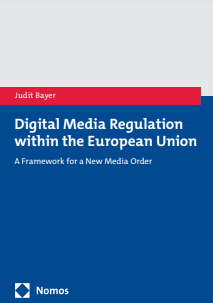Contents – Spring 2019
Paár, Ádám:
Paár, Ádám:
The image of the enemies in the propaganda of the Populist Movement (1891–1908)
The American People’s Party, also known as the Populist Party, was formed in 1891. It was joined by farmer movements, workers and progressive intellectuals, and subscribed to the values of social justice, solidarity and the strengthening of democracy. It labeled plutocracy and ‘the rule of big money’ as its enemies. The widespread use of the term ‘populism’ has been inspired by the Populist Party. The Populist Party and the populist movement behind the party advocated a left-wing democratic and egalitarian ideology. This study attempts to identify the groups that were described as ‘the enemy’ in the press and brochures of the movement. Although the movement sought to defend the interests of ‘the average men,’ regardless of their religious and ethnic backgrounds, the nativist and anti-immigrant attitudes and feelings, which marked the late 19th century in the USA, were emphasised in its propaganda. While many Populist leaders had negative attitudes towards immigrants and immigration, foreign actors (such as the European great powers and the Rotschild family) and plutocracy were merged in the populist press, its egalitarian character is irrefutable. A distinction must be made between the Populist Movement and the later American right-wing populist movements, coined as ‘one-person populisms’ in this paper. The latter type of populism was rhetorical in nature, and narrowed down the meaning of ‘the average man’ by ethnicity, race and religion.
The image of the enemies in the propaganda of the Populist Movement (1891–1908)
Médiakutató Spring 2019 pp. 9-23
Pap, Milán:
Pap, Milán:
„It is better than predicted, but…”
The New Economic Mechanism, launched in 1968, was a unique enterprise of state-socialism in the Kádár era. The introduction of the economic reform required years of preparation not only in the economy but also in communist propaganda. In this propaganda work, guided by the leaders of the communist state-party, radio, television and the press played a crucial role besides the higher and local organs of the communist party. Népszabadság as a state-owned high circulation newspaper served as a primary forum for this propaganda work: it not only informed about economic changes, but also tried to bring the attitudes and thinking of workers to the changing conditions of production in line with expectations. This paper examines the propaganda activities and thematic articles of Népszabadság aimed at enlightening and influencing the public in 1968.
„It is better than predicted, but…”
Médiakutató Spring 2019 pp. 25-37
Bajomi-Lázár, Péter:
Bajomi-Lázár, Péter:
A clientelistic media system and the Maslow pyramid of journalistic needs
Analysts argue that the media systems of Hungary and other Central/Eastern European countries underwent a process of ‘Italianisation’ or ‘Berlusconisation’ after the political transformations of 1989–1991. However, Hungary’s media system—and to some extent Poland’s, too—has in recent years undergone another series of changes that question the alleged similarities with the Mediterranean countries, as it no longer evinces a high level of political parallelism. A one-polar public sphere has emerged in which the governing party alliance controls most news outlets, while the opposition parties have limited access to the media. It seems therefore reasonable to suggest that ‘Italianisation’ or ‘Berlusconisation’ gave way to ‘Russianisation’ or ‘Putinisation’ in the 2010s. This means the establishment of a clientelistic media system based on informal links and Potemkin pluralism. This paper addresses the question of how this clientelistic media system has affected journalistic practices, i.e. it looks into causal relations between the whole and a part of the Hungarian media system. It suggests that clientelism has created a culture of dependencies and privileges, which sanctions ethical journalism but rewards unethical journalistic practices. In consequence, unethical journalism has become a successful adaptation strategy and even a viable business model. In other words: in the Maslow pyramid of journalistic needs, journalistic self-realisation—i.e., ethical journalism—cannot be realised as long as other needs, including job security, a competitive media market, and media freedom, are not met. This analysis focuses on Hungary, but also stresses some similarities with other countries in the region, and most importantly Poland.
A clientelistic media system and the Maslow pyramid of journalistic needs
Médiakutató Spring 2019 pp. 41-58
Kósa, István:
Kósa, István:
When do we become receptive to the messages of our political opponents?
The rapid growth of media content accessibility has resulted in increased interest in the research of selective exposure. In the 20th century, selective exposure was examined in the context of political communication, and in the traditional sense it meant confirmation bias (Stroud 2017). In the “modern” sense, selective exposure is defined as any systematic bias in audience composition and selection which differs from the composition of media content accessible at the moment, respectively (Knobloch-Westerwick 2015). In this meta-analysis relying mainly on political communication theory I present the selective exposure paradigm, its specific methodology and its main approaches. Lastly, I outline the most important findings within this research paradigm. These include challenging themes such as choice of attitudediscrepant political messages depending on content and the moment of measurement (Westerwick et al., 2017); incidental exposure to political messages and sharing (Weeks et al. 2017); selective exposure to political contents as mediator variables (Knobloch-Westerwick & Johnson 2013) and selective exposure to populist communication (Hameleers 2018).
When do we become receptive to the messages of our political opponents?
Médiakutató Spring 2019 pp. 61-71
Gálik, Mihály:
Gálik, Mihály:
The factors affecting media consumption and uses patterns by the individual in the mirror of exposure to media content
Individual consumption and/or use of media products and services are heavily influenced by the mode and circumstances that surround people when they meet media contents (media exposure). The nature of media exposure is always selective (selective exposure) when individuals are choosing among the contents available. Selective exposure includes motivated selection, selective perception and recollection. The precise definition of selective exposure has been debated up to the present day in communication sciences along with the needs and motives behind individual choices among media contents. Uses and gratifications approach aimed at analysing media choices was widely accepted in the era of limited supply of mass communication, but supply abundance that developed due to innovations and fast diffusion of infocommunication technologies (ICTs) has called for new methods. While examining the extent of awareness in individual choices among media contents, this paper also attempts to cover some findings of decision theory research that is relevant to selective exposure. Finally, it looks into a new conceptualisation of media use called selective exposure paradigm that contests the uses and gratification approach and takes a side in the ongoing debate.
Médiakutató Spring 2019 pp. 73-83




